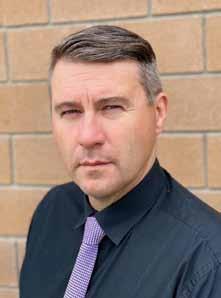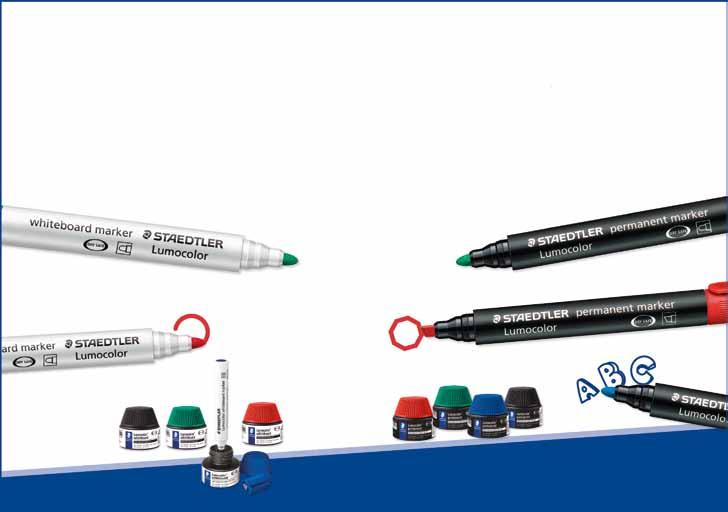
7 minute read
WHeN cOVID StrIkeS Our ScHOOL: cOmmuNIcAtION AND mANAgemeNt StrAtegIeS pApAtOetOe HIgH ScHOOL
Playground Surfacing
The only 5-Star rated Playground Surfacing in New Zealand
Safe: Cushionfall® playground mulch is specially treated so it’s free from nails and splinters. Many cheaper or imported products aren’t nail-free or splinter-free. Long-lasting: tests have proven that Cushionfall® playground mulch actually becomes more effective over time. After 5 years it will be in better condition than ever!
Quick-draining: the children can start playing as soon as it stops raining. Wind-proof: Cushionfall® playground wood chips are shaped in such a way so that they’re not disturbed or blown around by the wind.
Colourful: available in 8 non-toxic, UV-resistant colours, Cushionfall® playground mulch makes playtime fun!


Ph: (09) 299 3999 Mob: 0275 299 399 info@reharvest.co.nz www.reharvest.co.nz
WHeN cOVID StrIkeS yOur ScHOOL: cOmmuNIcAtION AND mANAgemeNt StrAtegIeS
reprinted with permission of ‘the Writing room’
www.thEwritingroom.nZ, jEnny@thEwritingroom.nZ
Vaughan couillault, principal of papatoetoe High School, shares his experience of navigating an outbreak of cOVID that directly impacts a school and community.
pApAtOetOe HIgH ScHOOL, a co-educational year 9–13 school in South Auckland, was thrust into the limelight during the February 2021 COVID outbreak. At 11.30am on February 14th Vaughan received, ‘a very unpleasant phone call from a very lovely person’ and embarked on, ‘a month’s worth of pain.’ A representative of Auckland Regional Public Health Service (ARPHS) notified Vaughan that there was a student with a positive COVID result at the school and there would be an announcement by the Director General Ashley Bloomfield that afternoon. Vaughan was advised that he would be able to notify the school community thirty minutes prior to the official announcement, giving him about two hours to co-construct a communication with ARPHS.
Communication Papatoetoe High School uses the Schoollinks Emergency ALERTS system incorporating an app for school leaders to send texts to all parents and students directly from their mobile phones. At 1.15pm Vaughan used the app to text an alert to notify parents and students of the situation and to check their emails for further information. Synced to the school’s student management system, texting ensured that the message got out to everyone prior to the Director General naming Papatoetoe High School as a location of interest.
For the next four days, the school consistently used the same approach to communications: a text alert advising recipients to check their email accounts. By the 18th, the school moved to email and Facebook as the pace of communication changed and the community became more attuned to checking social media for updates.
School staff received the information aligned to the families, with the professional ramifications explained so that they were all clear on what was required of them.
As the outbreak progressed and the net was cast wider to include student households, Vaughan and the team relied more and more on the school Facebook page to communicate to the community, ‘We have since had feedback from local businesses that they looked to our Facebook page rather than the Ministry of Health website or Healthline. It made sense as we were in direct contact with the ARPHS who actually make the decisions on the ground, and we could get the latest updates out that bit faster than the Ministry of Health.’
From the beginning of the situation, Vaughan made a conscious decision that the school should manage communications. So, whilst the Ministry of Education assisted with security and traffic management at school, and ARPHS concentrated on testing and track and trace, Papatoetoe High School did what a school can do best and sought to keep families up to date and reassured, ‘We were very contactable and approachable. Any questions, people could call me – and one minute after sending that first text I had my first phone call!’ Vaughan also worked with the media, ‘For the same reason, I wanted to be the person that the community could see, someone they knew. I kept to the facts and if I was asked a question that I couldn’t answer, I would go away and check. We had a lot of support.’
Vaughan also drafted in the school’s student leaders to get key messages out, ‘We had a team of students that we could trust, and again the families knew them.’
Management In the first few hours, alongside spreading the word, the school needed to establish a testing centre onsite. The school leadership team was designated ‘essential service status’ and six members of staff formed a work bubble and were permitted to physically meet onsite, with the pre-requisite masks and social distancing. Priority testing was also made available for the senior leadership team, ‘Throughout the crisis, I could get tested at 9am and have my results back by lunchtime.’
Arriving at school at 7am, with the assistance of the onsite staff, the ARPHS were able to open the onsite testing centre and start swabbing by 9am.
Going forward, each member of the senior leadership team
“the emergency ALertS system was easy to use and at my fingertips. I’d had it on my phone since we signed up with School-links, and I’d used it during the second lockdown back in August.”

took on a responsibility, ‘One was in charge of making sure all the students had devices, one liaised with ARPHS track and trace and so on. We worked relentlessly but it wasn’t stressful. We were all quite calm and felt that we had control of the situation.’
One of the key takeaways for Vaughan was that from the time the school gets the dreaded phone call, the school is going to be dealing with the implications for the next month, ‘You can’t freak out. You just have to accept it will be a month before business as usual and manage the situation. If you don’t, it will be even longer.’
For Papatoetoe High School, this realisation came on the day after the school re-opened on the 22nd. On the Monday everyone who had a test and a negative result was allowed to return to school, and the school successfully screened students on entry, watching out for the small numbers yet to be tested or awaiting results. The following day at 11.30am news came through that another student and her siblings had tested positive and everyone needed to be retested, ‘It was groundhog day. We texted all the families an emergency alert, sent emails and put the announcement on our Facebook page. We kept students at school until 3.15pm, staying in the same classroom that they had been in when we got the announcement. We re-opened our testing station, and at 1.45pm I was the crash test dummy having the first test. We started swabbing at 1.50pm.’
The decision to keep the students at school caused some consternation as misinformation spread about forcing the students to get tested but Vaughan, his reception staff and senior
leadership team personally met or spoke with concerned parents to allay any fears. Over the course of the next couple of weeks, Vaughan became an expert on the cycles of the virus, ‘It is useful for schools to know that there is no point getting tested until five days after exposure. Also until five days have passed you are unlikely to be contagious, and this gives you a bit of a window to work with. You don’t need to panic, you have time to put things in order.’ The other eye opener was how a disease outbreak is administered from the government end. The regional public health service runs everything locally, reporting their decisions back to the Ministry of Health who disseminate it through their national channels of communication, meaning that “We’ve got the relationship there can be a disconnect for short periods with the families and I felt that of time, ‘I’d advise schools to get to know communicating with them was our who you can talk to within your regional responsibility.” public health service and work closely with them. Don’t be a barrier, focus on creating a solution – and hopefully you can limit the fallout to four weeks, rather than six.’ Papatoetoe High School re-opened on March 8th with heartfelt messages from its student leaders calling on people to be kind, and Vaughan’s thanks for support and donations, shared across mainstream media. In Vaughan’s words, ‘You use every tool you’ve got to communicate – text, email and Facebook.’ And even the media itself. Vaughan is happy for schools to contact him for further advice or information.
WHITEBOARD MARKERS can be dry-wiped from glass or porcelain without a trace
Lumocolor
PERMANENT MARKERS
are WATERPROOF
and SMUDGE PROOF
on most surfaces
WHITEBOARD & PERMANENTRMANENT
markers
DRY SAFE INK
can be left uncapped for days without drying up

available in bullet and chisel tip
R EFILLABLE





